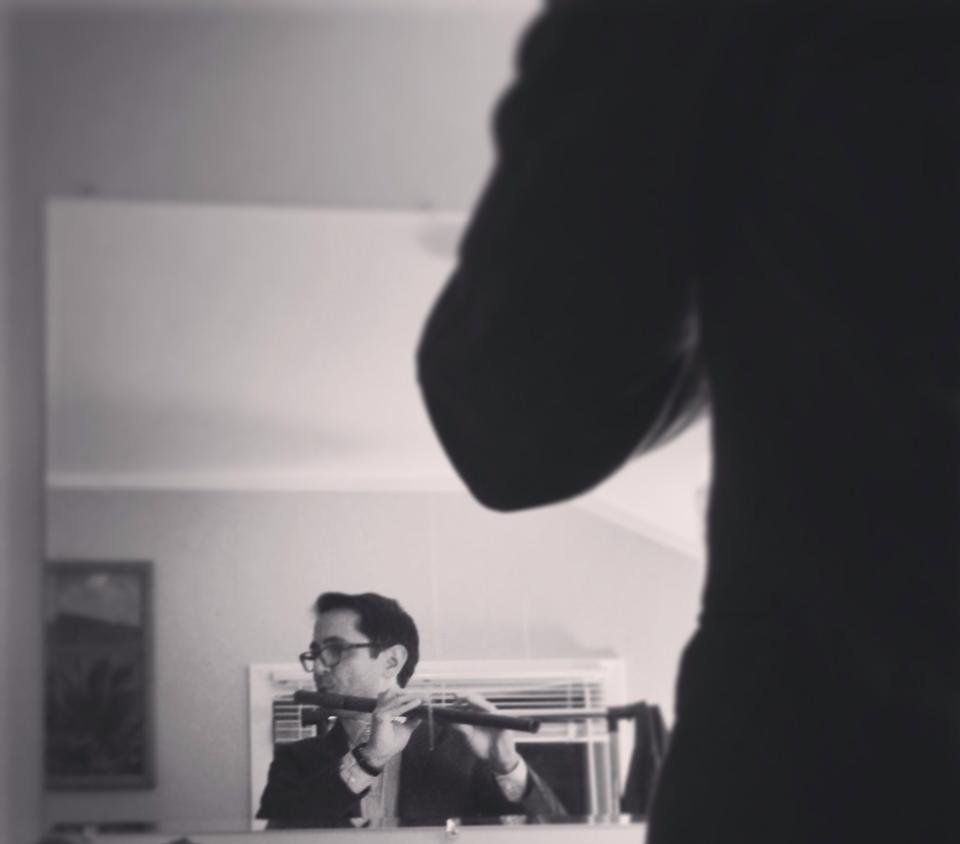Zen and the Art of Jigs and Reels…
From Alicia: One of my main interests these days is hearing musicians' ideas about mindset while they are engaged in playing--the meditative qualities involved in making music. I don't know much about shakuhachi, other than experiencing the meditation of it through your playing. I'd love to hear anything you'd like to share around those topics.
Bonus if you want to extend that to trad as well!
I’ve made mention of reconciling my concept of spirituality a few times, and even less about my thoughts on meditation, especially as it pertains to shakuhachi, or any of my musical endeavors, really. Mostly this is because I haven’t formally studied meditation, or been to any Zen retreats, or anything of that nature. I’m kind of a fear-based decision maker, so sharing an uneducated opinion frightens me. But, while I am no self-help guru, I have played shakuhachi for over 30 years which gives me some perspective on the subject of meditation.
Shakuhachi history is a heady mix of legend and mythology until you get to the 18th century. While very little about the ancient history is verifiable, we can at least be fairly certain that shakuhachi was a tool used by Zen Buddhist monks to attain a meditative state and thus enlightenment through the philosophy of ichi-on jōbutsu, or “enlightenment through one sound.” This was not a musical pursuit. Indeed, much of the terminology we have for the shakuhachi is not related to music at all.
Take utaguchi, our word for the mouthpiece, for example. Kuchi (which when suffixed becomes -guchi) can mean “opening" or “mouth.” Uta is translated as “song” in modern Japanese, but it also refers to chanting. Given that these pieces were done in place of the sacred sutras, it makes sense that utaguchi would refer more to “chanting,” than “song.”
I’ve never been able to sit down and meditate. My dad spent a year at a Buddhist monastery in his youth. He told me during mediation, in the quiet stillness of early morning practice, he and the other students could expect an ungentle rap across the shoulders with a bamboo cane should they fall asleep during meditation. There was no fooling the monks. I’m positive that were I in his place, I would have been battered half to death.
From what I could gather, my dad hated his experience at the monastery, so mediation was never a topic we discussed. We would talk about concentration. Focus. And practice, practice, practice. Practice was the means to get us to the goal of playing music to the best of our ability regardless of the situation or distraction.
The word “meditation,” though, was never mentioned. Remarkable considering the outsized importance meditation ostensibly plays in the shakuhachi’s entire raison d’être. I still don’t speak of my shakuhachi practice as meditation per se, but it’s simply a matter of semantics. It is definitely an opportunity for me to quiet a lot of the extraneous voices vying for attention in my head which seems pretty darn meditative when you put it that way.
Most days, I sit down for what feels like 10 or 15 minutes when in reality, 2 or 3 hours has passed. I manage to exist outside of time and space for a bit. To me, that means I have quieted my mind which feels like a victory. However, this is not something unique to my shakuhachi practice. In fact, I probably didn’t consciously take note of it happening until I would find myself sitting in a dark room because I was unaware the sun had gone down while I was learning tunes on the penny whistle.
For a brief moment, I considered learning the uilleann pipes—the Irish bagpipes. I had a practice set (bag, bellows, and chanter) and had my friend, piper Phil White, make me the all-important reed. One night at the pub, I mentioned to one of my musical Buddhas—the incredible piper, Tom Creegan—that I had gotten a practice set. He asked me to show him how I was holding the chanter, gesturing with his pint glass. I held up my glass approximating how I would hold the chanter; he immediately told me he’d come by tomorrow and get me started.
Conor Byrne, myself, Tom Creegan
He went through the various parts of my practice set, looking it over to make sure it would hold up, checking the reed (on which Phil had written Hands off, Tom!) and kind of gave me a 101 of piping. He told me that compared to when he started learning the pipes, I was at a disadvantage because I already had some sense of music. He explained that in order to learn piping, I’d have to just sit and play an “A” for hours to get used to the strange mechanics of piping and ignore the urge to play tunes. The similarity to shakuhachi, and of ichi-on jōbutsu was eerie.
My conclusion, at least at the time of this writing, is that meditation isn’t necessarily sitting lotus position and chanting. It can be that, sure, but not doing that doesn’t mean you’re meditating wrong. Meditation can also be knitting, writing, painting, or playing jigs, reels, slides and polkas. To me, the goal isn’t shutting off your brain—no matter how nice it would be from time to time! Sometimes just watching a bit of low-stakes TV and actively ignoring your sprawling to-do list, or the garbage fire that is the state of the world right now is exactly what the doctor ordered.
Your meditation, whatever it is, can and maybe should be something with a bit of focus and purpose. There’s not much more you can ask for.
More anon,
Hanz
p.s. I never did learn to play the pipes…


